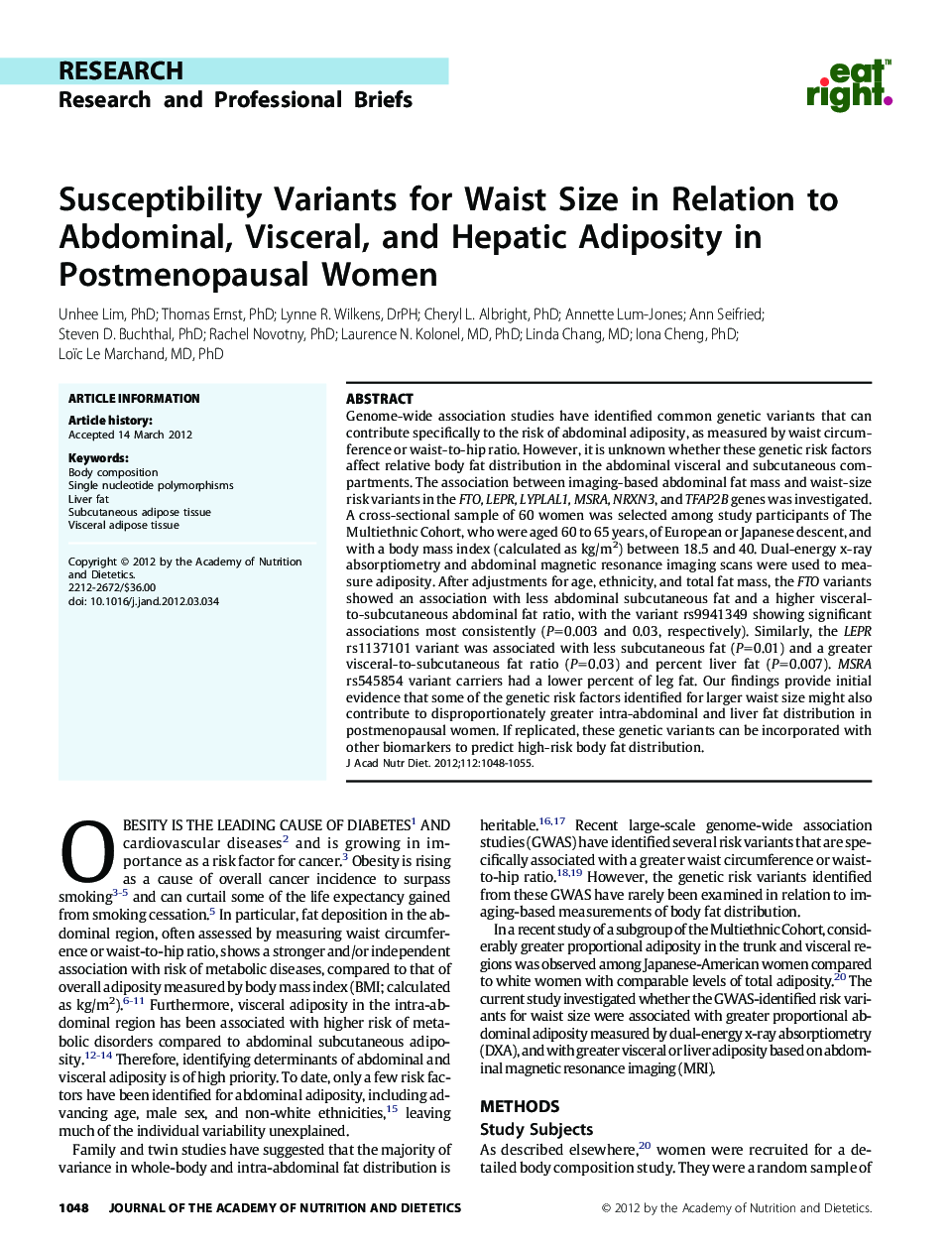| Article ID | Journal | Published Year | Pages | File Type |
|---|---|---|---|---|
| 2654939 | Journal of the Academy of Nutrition and Dietetics | 2012 | 8 Pages |
Genome-wide association studies have identified common genetic variants that can contribute specifically to the risk of abdominal adiposity, as measured by waist circumference or waist-to-hip ratio. However, it is unknown whether these genetic risk factors affect relative body fat distribution in the abdominal visceral and subcutaneous compartments. The association between imaging-based abdominal fat mass and waist-size risk variants in the FTO, LEPR, LYPLAL1, MSRA, NRXN3, and TFAP2B genes was investigated. A cross-sectional sample of 60 women was selected among study participants of The Multiethnic Cohort, who were aged 60 to 65 years, of European or Japanese descent, and with a body mass index (calculated as kg/m2) between 18.5 and 40. Dual-energy x-ray absorptiometry and abdominal magnetic resonance imaging scans were used to measure adiposity. After adjustments for age, ethnicity, and total fat mass, the FTO variants showed an association with less abdominal subcutaneous fat and a higher visceral-to-subcutaneous abdominal fat ratio, with the variant rs9941349 showing significant associations most consistently (P=0.003 and 0.03, respectively). Similarly, the LEPR rs1137101 variant was associated with less subcutaneous fat (P=0.01) and a greater visceral-to-subcutaneous fat ratio (P=0.03) and percent liver fat (P=0.007). MSRA rs545854 variant carriers had a lower percent of leg fat. Our findings provide initial evidence that some of the genetic risk factors identified for larger waist size might also contribute to disproportionately greater intra-abdominal and liver fat distribution in postmenopausal women. If replicated, these genetic variants can be incorporated with other biomarkers to predict high-risk body fat distribution.
